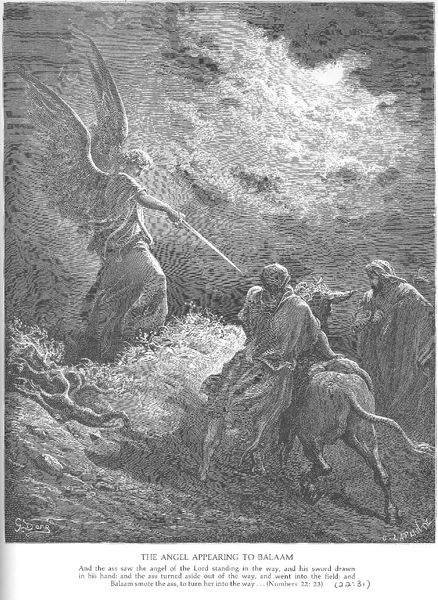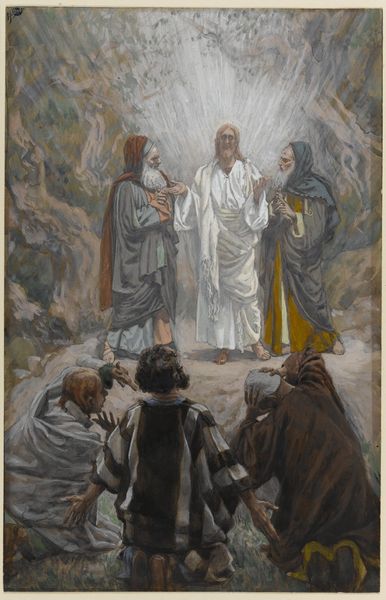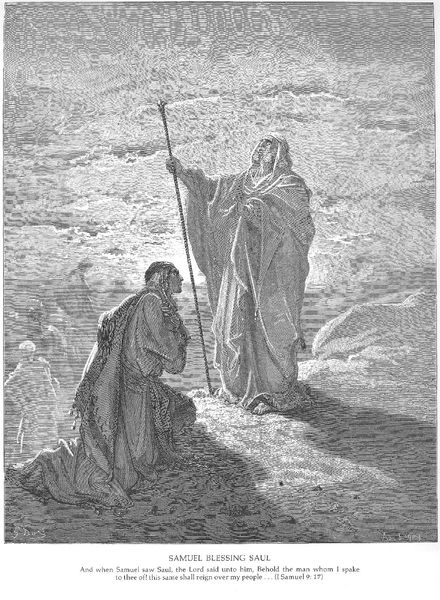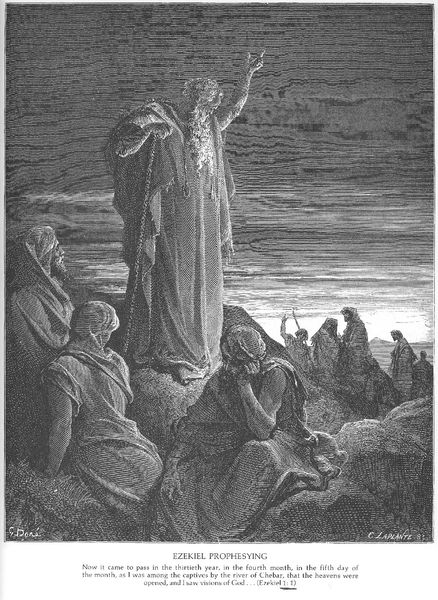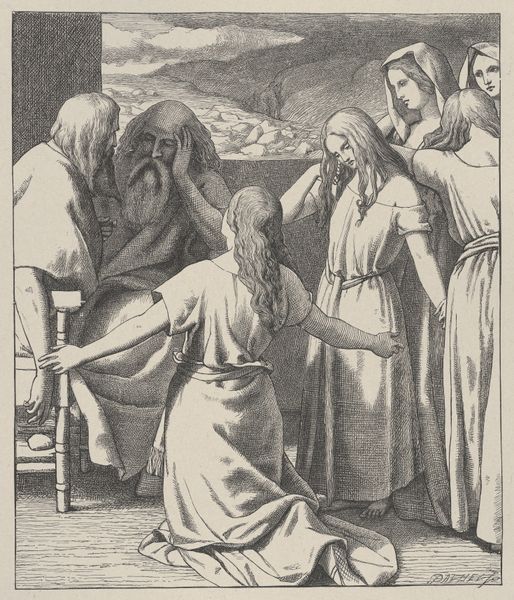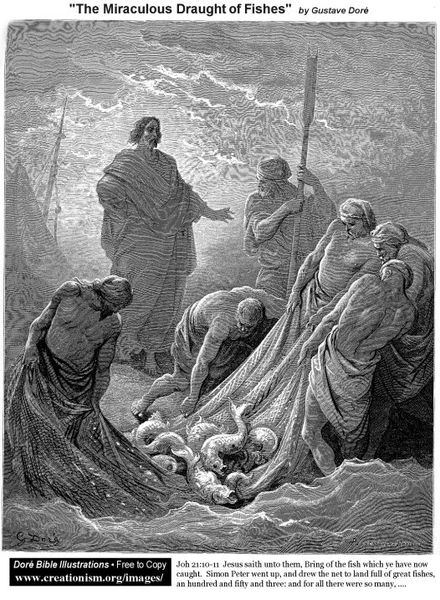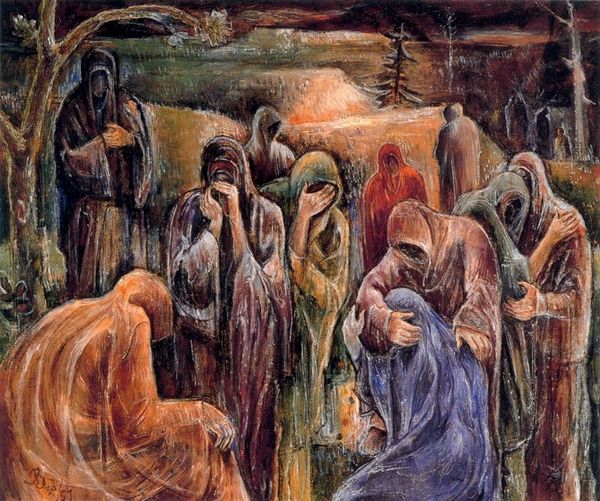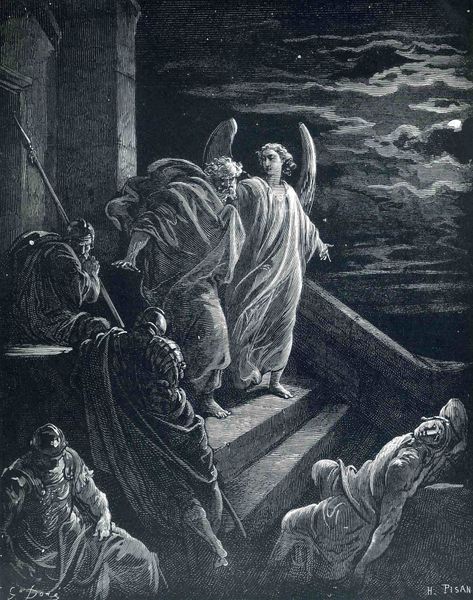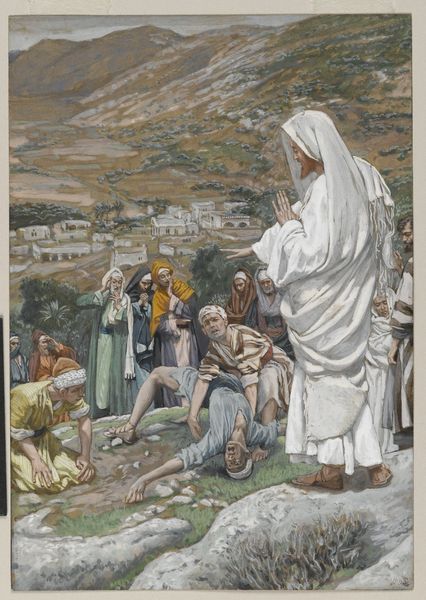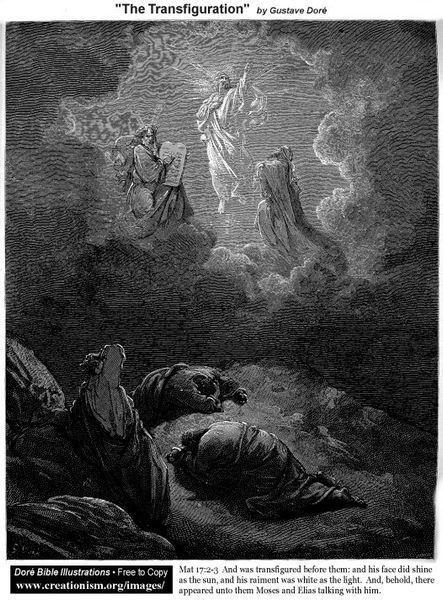
watercolor
#
watercolor
#
symbolism
#
watercolour illustration
Copyright: Public domain
Curator: Today, we're examining "At this the disciples crouched in the bottom of the boat", a striking watercolour illustration created in 1909 by Charles Robinson. Editor: It's immediately captivating. The churning greens and stark violet shades above communicate intense chaos. Visually, there is a strong balance. Curator: Precisely. Robinson utilizes color contrast masterfully to express fear versus serenity, drawing on a rich symbolic palette tied to pre-war expressionism. Notice the dramatic waves crashing around the small boat, where the disciples are huddled. It conveys their vulnerability. Editor: Agreed. But I would push against limiting our understanding here. This work was likely commissioned, destined not for galleries but books. Robinson's illustrations brought aesthetic, moral, and often nationalist narratives to mass audiences in Britain, reflecting a need to reaffirm faith. Curator: Certainly the political and religious context cannot be ignored, but look closely at the formal elements at play. The composition's emphasis on a golden halo highlights notions of transcendence; Christ is centered but seems curiously separate from the material reality beneath him. Semiotically, we find an interesting reading: faith versus mortal anxieties, visualized as textural conflict and harmonious balance. Editor: But is that harmony achievable? Weren't British society, families even, wrestling with profound doubts and disillusionment during the Edwardian era? Aren't Robinson's disciples presented more realistically here--their faces are marked with visible human distress--compared to idealized depictions typical of religious painting at the time? Curator: A valid point. And while there are historical interpretations and social forces at work, do notice Robinson's attention to rendering dramatic contrast, creating spatial ambiguity to reflect complex emotional states through tonal values? Editor: It’s precisely this push and pull that makes this work, beyond a simple narrative. Perhaps that liminality itself speaks most potently to the shifting beliefs shaping Britain on the verge of momentous social change. Curator: An important takeaway, absolutely. Examining color and form together, it encourages us to recognize underlying tension and its resonance. Editor: Indeed. By understanding social forces and assessing formal arrangement of material composition in conversation, both bring light and new depth of feeling for how we read artworks today.
Comments
No comments
Be the first to comment and join the conversation on the ultimate creative platform.

